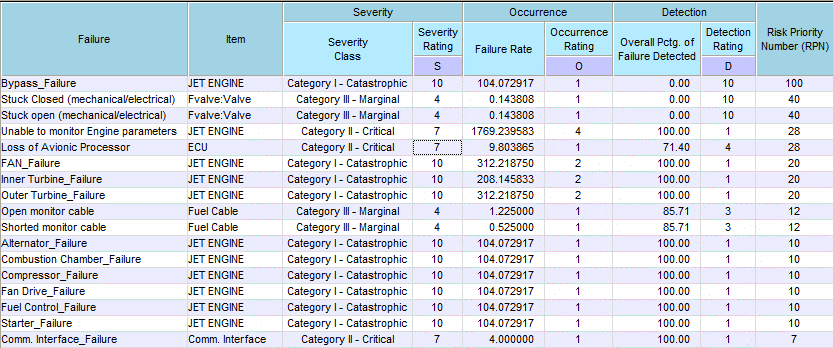

Products
Risk Priority Assessment Chart
Among the predefined FMECA Plus configurations, there are two “eXpress charts” associated with Risk Priority Assessment—one of them labeled “Brief,” and the other labeled “Detailed.” In both of these charts, a Risk Priority Number (RPN) is calculated based on the results of diagnostic analysis within eXpress. This number is then used to sort the chart so that the highest-risk failures are listed at the top.
“Brief” Format
In the “Brief” format, two columns are provided for each of the three factors used in RPN calculation— Severity (Severity Class and Severity Rating columns), Occurrence (Failure Rate and Occurrence Rating columns) and Detection (Overall Pctg. of Failure Detected and Detection Rating columns). In each case, the numbers in the ratings column are calculated based on the data in the other column (which was itself drawn from the associated eXpress design and/or diagnostic study).
“Detailed” Format
In the “Detailed” format, an additional column is provided for each factor, showing specific elements within eXpress that are related to the calculation of that rating—the End Item Effects that result from the given failure (under Severity), the Root Failure Mode Causes that result in that failure (under Occurrence) and the specific tests with which that failure can be detected (under Detection).
These two reports offer a great improvement over “standard” RPN charts (where the analysts manually enter the various ratings), since the calculated ratings (and resulting RPNs) are based entirely on data within the eXpress model and analysis results within an eXpress diagnostic study. This is just one more case where FMECA Plus leverages the efforts of both Reliability and Diagnostic engineers to create a more accurate understanding of the system.



